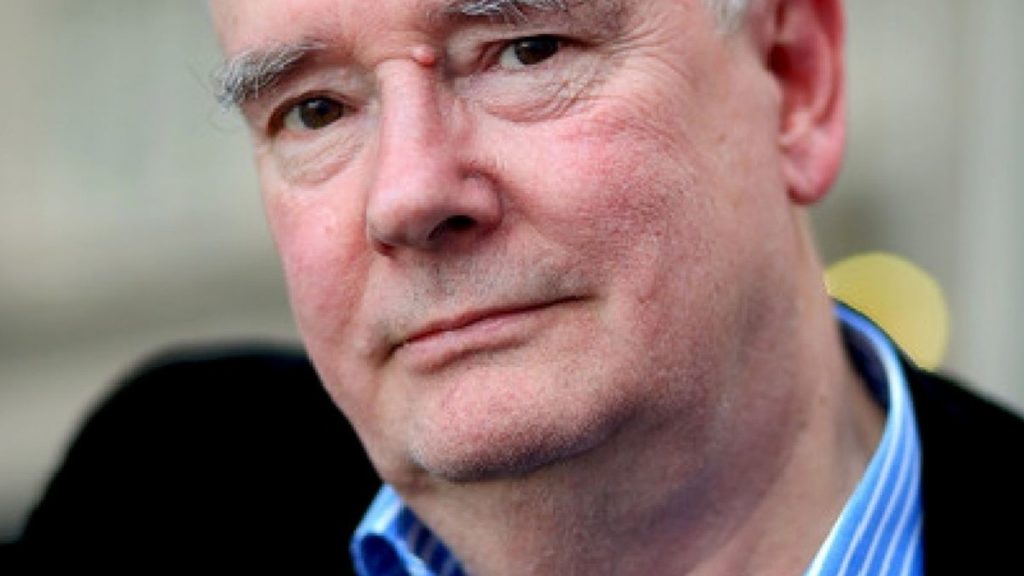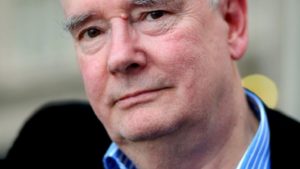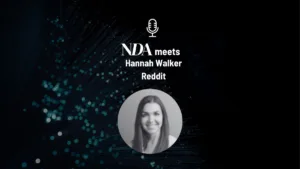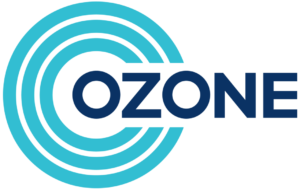Patrick Collister, NDA’s monthly creative columnist, is the Curator of The Caples Awards, Editor of Directory and a friend to Ad-Lib.io.
I’ve been reading Walter Isaacson’s marvellous biography of Leonardo da Vinci.
He details how when Leonardo pitched his services in 1482 to Ludovico Sforza, ruler of Milan, Leonardo ‘s CV read:
- Good at bridges.
- Good at drainage.
- Good at blowing things up.
- Good at designing cannons.
- Good at designing war ships.
- Good at tunnels.
- Good at armoured chariots.
- Good at unconventional weapons.
- Good at sculpture.
- I paint a bit.
What’s interesting is that what we think of today as creative Leonardo didn’t and what we don’t think of as creative he did.
The word ‘creativity’ didn’t exist back then even though Leonardo had buckets of the stuff.
He would have called himself a problem solver and, by golly, Ludovico had his problems. War with Venice, a war in Naples, constantly shifting alliances not to mention the threat of a French invasion.
Leonardo studied ballistics and physics and his notebooks are full of ideas for attack and defence. As well as sketches for a helicopter and a submarine, he designed the world’s first machine gun and the world’s largest crossbow.
When Milan was occupied by the French and Ludovico imprisoned in 1500, Leonardo was hired by the Borgias as an architect and military engineer. His next job was as a hydrological engineer in Florence. Then back to Milan as a military adviser.
His last gig was as an architect and technical expert at the court of King Francis I of France.
Funnily enough, perhaps his greatest gift to the history art isn’t his paintings (of which there are just 12) but the paint.
It was Leonardo who discovered that when you ‘cook’ oil paints at a low temperature and add a little beeswax, they stay bright when they dry.
While Ludovico was interested in his employee’s grasp of such a wide range of technologies, he seems to have used him most to enhance the Milan brand.
Leonardo was a master of multimedia events. He designed pageants and processions to impress visiting oligarchs.
Among his many triumphs were a couple of robots made hundreds of years before anyone else made anything similar: a knight in armour that stood and sat down and waved its arms and a lion that roared and belched out flowers for the King of France.
Stories of his wonders spread across Europe.
And his skills made both him and Ludovico famous.
He was able to amaze audiences because he understood the entire creative process. He needed to know how things work.
Today, for instance, he wouldn’t just be experimenting with ChatGPT and Midjourney, he would be studying cloud-optimised GPUs and neural networks.
Finally, having hacked his own AI, he’d have thought about what he could do with it.
Maybe a ‘Last Supper’ in 3D.
The whole end to end process.
Which got me thinking. Today you can chuck some paint at a canvas and you’re creative but build a search engine or put a computer in the pocket of just about every person on the planet and you’re…
Well, Google ‘Steve Jobs’ and you’ll see he was a businessman, computer scientist, entrepreneur, inventor, media proprietor, orator, philanthropist and pioneer of the computer revolution. A Leonardo of sorts but rarely called creative.
I’m thinking now of Jensen Huang. He’s described as an electrical engineer. He’s also the co-founder and President of Nvidia, the company that invented the GPU back in 1999.
As you know, GPUs do a lot more than brighten up the graphics of computer games. They are now the force behind machine learning and AI technologies and they’ve catapulted Nvidia into place as the sixth largest company (by market cap) in the world.
Huang would probably be embarrassed to be called ‘creative’. Yet no-one is having more impact on creativity and creative people than he is.
ChatGPT, Midjourney and all the other generative AI software systems that Nvidia makes possible are calling into question what creativity actually is.
Especially in advertising.
When I was a creative director back in the day, I had the magic dust. But now, if you can rustle up a perfectly acceptable film at your desktop with just a few prompts, where’s the magic in that?
Dare I say it, AI is exposing the fetishisation of creativity.
This started in the nineteenth century when, as my friend Julian puts it, “posh people in velvet wandered around thinking big thoughts while stoned on laudanum.”
Creativity became the art of expression, in painting, in writing and, eventually, in advertising.
What’s important isn’t so much what you say but how you say it.
“Intelligent, educated people read the Economist.”
Or, “I don’t read the Economist”, Management Trainee, 42.”
When in 1982 Saatchi & Saatchi let it be known they had hired copywriter Geoff Seymour at a salary of £100,000 (or just under £500,000 today) that was fetishisation.
The proliferation of awards shows today, that’s fetishisation. They promote the myth that only remarkable work produced by remarkable people works. This is simply not true. Algorithms are doing a pretty fine job of it.
Advertisers spent over £10 billion on online display ads in 2022. Presumably they did what they were supposed to because spend is expected to increase by 5.4% in 2023. (HERE).
Yet sifting through the 900+ winners of Cannes Lions won this year, I could not see a single banner ad.
Look, when I was a part of it, I loved it. Despite twinges of imposter syndrome, it was fun as my job description inflated from creative director to executive creative director and on, oh lordy, to Chief Creative Officer. I won Lions. I drove a Porsche. But when you step back and look at it, advertising may be artful but in itself it does nothing to make the world a better place.
Nick Bell tells a story of leaving the Grosvenor House one night festooned with awards he’d just won. His taxi driver was incredulous. “They give you prizes for the adverts?”
I admire David Lubars, who brought Hollywood to branded content with BMWFilms.com. (Watch the epic “Race the Devil HERE.)
I bow to Sir John Hegarty, who has grown dozens of brands and created wealth for thousands of people.
Nils Leonard is fêted for his work at (and sale of) Uncommon Studios.
But no-one knows who invented programmatic advertising. Or DCO.
Sorry, folks, but the nerds have done more to transform advertising than the ‘creatives’.
Larry Page, Sergey Brin and Mark Zuckerberg at one level and mathsmen like Clive Humby, Joe Zawadzki and even my pal Oli Marlow Thomas at another.
Technology has spawned a host of new agencies who are exploring end-to-end advertising. They are finding ways AI can cheaply and rapidly absorb a brand’s assets to regurgitate them in literally countless ways across innumerable channels.
Now that’s creative.
It’s just not called it. In fact, ask our favourite search engine ‘Is tech killing creativity?’ and you get 11,400,000 results in 0.39 seconds. Mostly ‘yes’ answers.
(Incidentally, those new ‘agencies’ don’t call themselves that. They are platforms, SaaS companies, ad-tech startups anything but agencies because agencies are now trivial in the mix of services available to a brand owner. Proof is in their valuation. Build an ad agency and you may sell it for four or five-times earnings. Build an ad-tech or martech business and you could get twelve times EBITDA. (HERE)
It’s a conundrum.
On the one hand, we have creative businesses regarded as the enemies of creativity and, on the other, producers of adverts regarded as creative.
Perhaps we need to redefine our terms?
Google calls its engineers ‘creatives’. And that’s fine by me because they (and the tecchies at Apple, IBM, Microsoft and Amazon) are changing the world.
By extension, performance-driven businesses like Smartly, Celtra, Magicx and others are
creative too whereas adam&eve DDB, AMV BBDO and Leo Burnett are not.
The distinction is this, I think.
True creatives make things people use. Ad agencies make things people regard.
That’s not to sneer at agency folk. They are my tribe after all and there are some fabulous talents there. The difficulty is in knowing what to call them, these artisans who craft advertisements?
Storytellers, perhaps? (This was another of Leonardo’s accomplishments, he had the copywriter’s ability to intrigue and surprise. For instance: “Many people by puffing out a breath with too much haste will thereby lose their sight and soon after all consciousness.”
The reveal: this is what happens when you blow out the candle and go to bed.)
How about ‘imagineers’, to borrow the word from Disney?
It gets rid of the division between media planners, strategists, writers and designers and makes plain their value as thinkers. Ideas people rather than creators.
Maybe ‘creatives’ will simply fade away as creators take over.
As for Leonardo, he never called himself anything other than “a man without letters”.
He is, though, the most inspirational creative director in history.
As AI continues to send shockwaves through culture, his methodology makes more sense than ever. Not to fear new technology and reject it but to study it, understand it, master it, then create with it.









